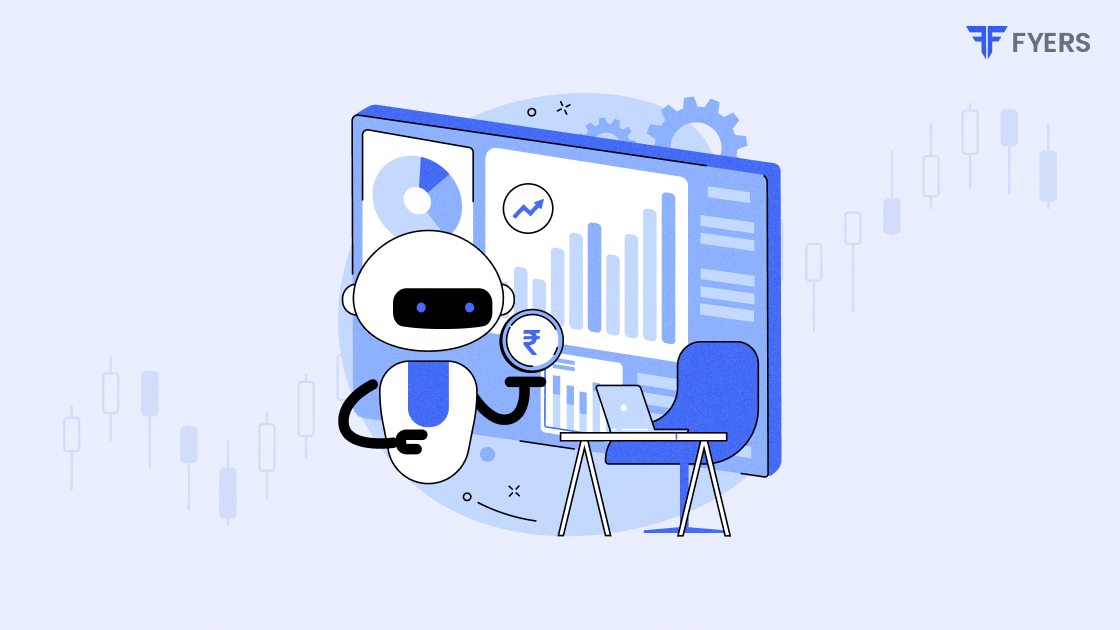

 19 Jul, 2024
19 Jul, 2024
 6 mins read
6 mins read

We are in the era of AI and instant orders, where rapid execution is the key to success. This model is also prevalent in trading, particularly through automated trading. Automated trading is gaining huge popularity, especially among traders who do not have the time to observe the market for hours and rely on preset data to shape their trading portfolios. Check out this blog to learn more about automated trading and how to begin.
Automated Trading, also known as algorithmic trading or algo trading, involves using computer programs to execute trading strategies automatically. These algorithms are pre-programmed with specific execution criteria, such as timing, price, volume, etc., allowing trades to be executed at speeds and frequencies beyond human capabilities.
Automated trading systems have gained traction with the rise of technology and internet accessibility across the country, which provides traders with tools to analyse market data, identify trends, and execute trades automatically without manual intervention. This form of trading helps enhance risk mitigation by safeguarding against emotional decision-making and ensuring a more disciplined approach to trading.
Automated trading is a form of trading based on or designed around specific rules with defined criteria involving analysis of price movements, market conditions, and the use of technical analysis tools like indicators, etc.
This algorithm can range from simple rule-based systems to complex models using artificial intelligence and machine learning. These algorithms are thoroughly backtested before being implemented in live trading by using historical market data to evaluate their performance and refine their trading strategies. This will help traders identify the potential flaws in the algorithm and optimise it.
The algorithm is then deployed on the selected trading platform that supports automated trading, where it continuously monitors the market, analyses data, and identifies trading opportunities based on the pre-set criteria.
When the algorithm identifies a trading opportunity that meets its criteria, it automatically places buy or sell orders without manual intervention. This ensures rapid execution and can take advantage of short-term market movements. Traders need to monitor the performance of the automated trading systems and make necessary adjustments to the algorithm for profit optimisation while adding effective risk management techniques like stop-loss or optimum position sizing for capital preservation.
Automation: Emphasizes the automation of the trading process, reducing the need for manual intervention.
Broader Scope: This can include simpler automated strategies, such as moving average crossovers or rule-based systems.
Ease of Use: Often marketed towards retail traders with user-friendly interfaces and pre-built strategies.
Integration: This may include additional tools like risk management, portfolio rebalancing, and trade execution monitoring.
With automated trading gaining increasing popularity, it is essential to understand its pros and cons. Here is a brief analysis of the benefits and limitations of using automated stock trading for efficient implementation.
A few prime advantages of using automated trading are,
Automated trading systems execute trades based on predefined criteria without being influenced by emotions like fear or greed, which can cloud judgment in manual trading.
Algorithms can analyse market conditions and execute trades much faster than humans, leading to quicker responses to market opportunities and reducing the risk of missing out on profitable trades.
Traders can test their algorithms using historical market data to evaluate performance and optimise strategies before deploying them live. This helps refine trading rules and improve overall effectiveness.
Automated trading systems can monitor markets round the clock, even when the trader is not actively watching, ensuring that opportunities are not missed during non-trading hours.
Some of the top limitations of using automated trading include,
Automated trading systems operate based on predefined rules and may struggle to adapt to sudden market changes or events not accounted for in their algorithms.
Algorithms lack human judgment and intuition, which can be crucial when qualitative factors or unexpected events impact market dynamics.
Automated trading relies heavily on stable technology infrastructure and data feeds. Technical failures or disruptions could lead to missed opportunities or erroneous trades.
Automated trading comes with the risk of overfitting, where the algorithms are overly optimised to historical data. This can lead to strategies that perform well in backtesting but fail to perform as expected in live market conditions.
The steps for getting started with automated trading are mentioned hereunder.
The first step to start with automated trading is to understand its basics.
Traders should select a reliable trading platform or broker that supports automated trading services and provides access to necessary tools and APIs.
They should have defined trading strategies based on their individual risk appetite and goals.
Traders should also employ efficient backtesting strategies using historical market data to support and evaluate the algorithm's performance.
A useful tip is to begin trading with a demo account or a small amount of capital to test the automated trading system in real market conditions without significant risk.
It is also important to implement effective risk management techniques and monitor the portfolio to stay updated with market trends and regulatory changes that can impact the trading portfolio to make necessary algorithm adjustments.
Automated trading is like an advanced trading model that helps eliminate human errors or bias and optimises trading opportunities 24/7. It helps traders leverage the changing market dynamics to maximise the profit potential of their trading portfolio. However, automated trading comes with significant risks and cannot truly replace the need for human intervention. Therefore, constant monitoring of the automated trading platform is essential for meeting trading goals efficiently.
Calculate your Net P&L after deducting all the charges like Tax, Brokerage, etc.
Find your required margin.
Calculate the average price you paid for a stock and determine your total cost.
Estimate your investment growth. Calculate potential returns on one-time investments.
Forecast your investment returns. Understand potential growth with regular contributions.